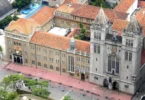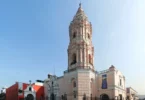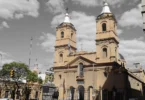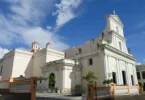Introduction
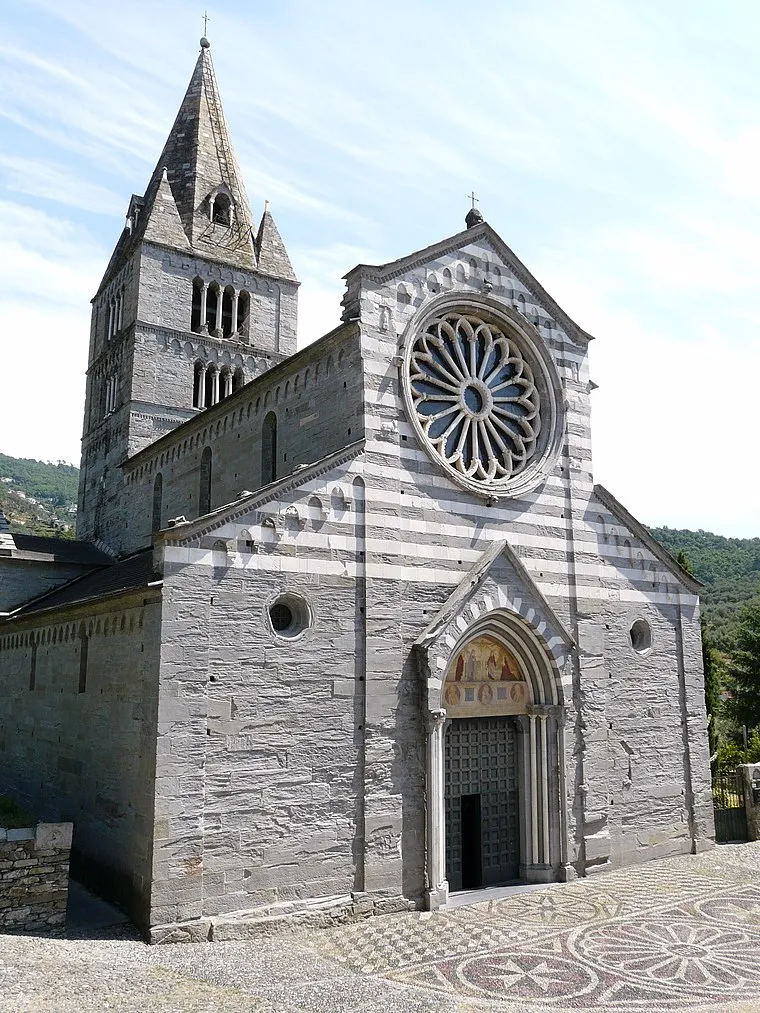
The Basilica of San Salvatore dei Fieschi – also known simply as the Basilica dei Fieschi – is a Catholic place of worship located in the hamlet of San Salvatore, in Piazza Innocenzo IV, in the municipality of Cogorno in the metropolitan city of Genoa . The church is the seat of the parish of the same name in the vicariate of Chiavari – Lavagna of the diocese of Chiavari . It has the dignity of a minor basilica.
It takes its name from the village in which it is located, San Salvatore dei Fieschi, and its construction is intended to recall the ancient noble presence of that family, originally from Lavagna , in the lands of the Fontanabuona valley and the surrounding valleys. Today the village is a renowned hamlet of the municipality of Cogorno, and is also the seat of the municipal administration.
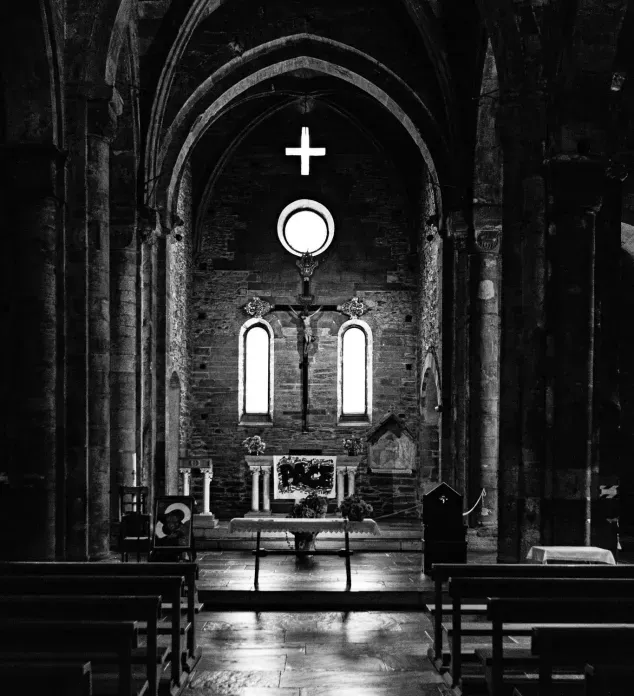
The basilica was built in 1244 by Pope Innocent IV , born Sinibaldo Fieschi, of the noble Fieschi family , who for a long time dominated the entire Fontanabuona valley and a good part of the Aveto valley .
The decision to found a new place of worship was taken, according to local historical sources, while the Pope was in Genoa on his way to the Council of Lyon held in the French city in 1245. Just as the Pope was presiding over the council, the Fiesca village and the entire county were harshly attacked by Emperor Frederick II of Swabia who destroyed a good part of the territory. The Pope excommunicated the Emperor shortly after, directly from the Council of Lyon.
The reconstruction work resumed only in 1252, the year in which the entire square area was redesigned, erecting a new count’s palace – later called the Fieschi palace – with an adjoining oratory near the basilica . The construction work lasted for several years, so much so that the building was opened and consecrated for religious worship by Pope Adrian V , Ottobuono Fieschi, nephew of his uncle-pope Sinibaldo Fieschi, who ascended to the papal throne in 1276. It underwent restoration work in the 19th century, designed by Maurizio Dufour and more recently in the 1990s.
The religious center was very important for the development of the territory, also because the temple was a stopover for pilgrims heading to Rome walking on the famous Via Francigena . The importance and beauty of the basilica – together with the adjacent village – was included in 1860 as a national monument and is still considered today one of the most valuable and best preserved Romanesque places of worship in Liguria .
On 27 April 2005, on the occasion of the 750th anniversary of the death of Pope Innocent IV, the “Cultural Centre Museum of the Fieschi” was inaugurated in the rooms of the ancient Count’s palace, fully dedicated to the history of the noble Fieschi family.
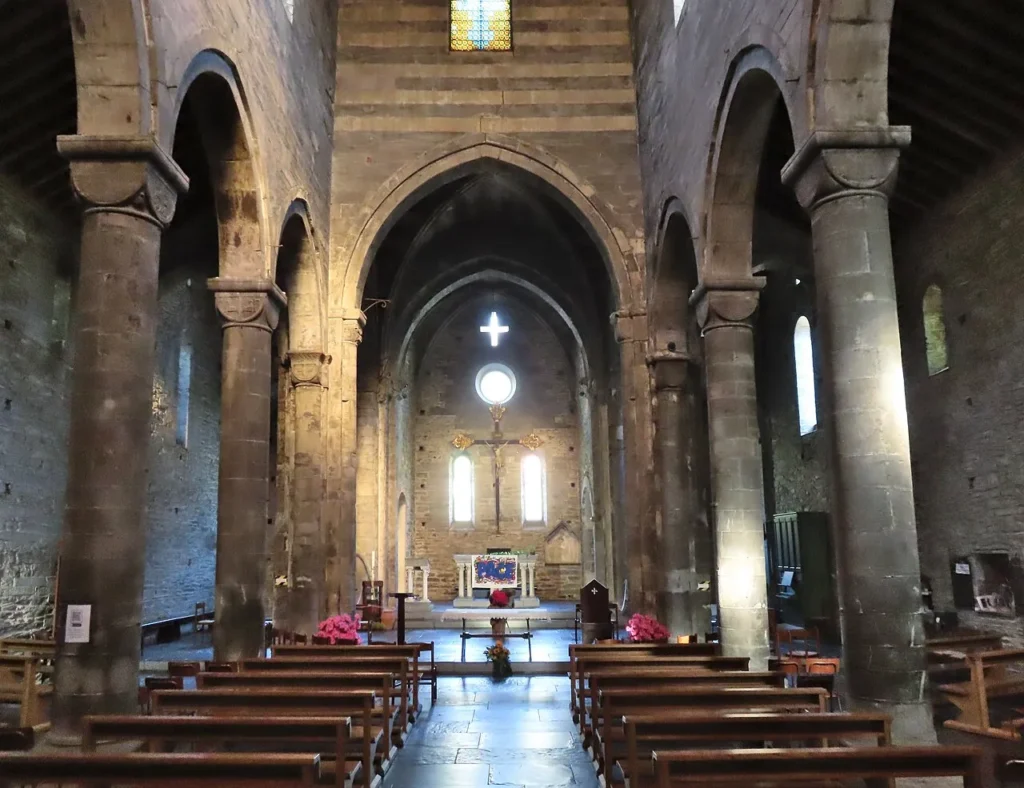
Architectural Style : Gothic architecture
Exterior
It has a salient façade covered with a slate facing surmounted by alternating bands of white marble and slate, in the typical style of Ligurian buildings , both public and religious.
Pilasters and hanging arches enrich the layout of the façade; at its centre there is a large rose window surmounted by marble arches in Gothic-Romanesque style. The architrave of the Gothic portal bears an inscription relating to the foundation of the temple. In the lunette there is a 15th century fresco dedicated to the Crucifixion. The central cusp is accompanied on four sides by as many spires.
In the bell tower there is a concert of six bells in the diatonic scale of D flat 3, cast by the Picasso foundry in Recco in 1905 , while the sixth was recast in Avegno in 1977 by the Enrico Picasso & Figli foundry.
Interior
The interior of the building has an architectural layout with three naves, separated by rows of stone columns with particularly decorated capitals. Among the works and relics preserved in the basilica, of great value are the fragments of the True Cross of Jesus, enclosed in a clearly visible glass case, donated to the temple by Pope Adrian V.
In the right nave, on the floor, is the pipe organ , built by Dell’Orto & Lanzini in 1993 and installed in the basilica in 2000 on the occasion of the transfer of the previous instrument (made by Lorenzo Paoli in 1882 and already placed on the choir in the counter-façade) to the former oratory of San Salvatore ; with entirely mechanical transmission, it has 5 registers on two manuals, with a pedal board without its own registers.
Events
The solemn feasts are: San Salvatore (January 1st); Our Lady of Sorrows (2nd Sunday of May); San Bernardo (August 20th); and three celebrations that have in common the devotion to the Holy Cross : the Invention of the Cross (May 3rd); the triduum “of Gratitude” (in the first three days of May, to remember the protection from a cholera epidemic in 1835); the Exaltation of the Cross (September 14th).
On 14 December 1880, Pope Leo XIII granted plenary indulgence (also applicable to the deceased) to the faithful who, having confessed and received communion, visited the basilica in the week from 14 to 21 September.
Feast Day
Feast Day : 20th August
Church Mass Timing
Yet to Update
Church Opening Time:
Monday : 9:30 am – 6:30 pm
Tuesday : 9:30 am – 6:30 pm
Wednesday : 9:30 am – 6:30 pm
Thursday : 9:30 am – 6:30 pm
Friday : 9:30 am – 6:30 pm
Saturday : 9:30 am – 6:30 pm
Sunday : 9:30 am – 6:30 pm
Contact Info
Address:
Piazza Innocenzo IV, 20, 16040 Cogorno GE, Italy.
Phone: +390185380245
Accommodations
Connectivities
Airway
Genoa (GOA) Airport to basilica of san salvatore dei fieschi distance between 41 min (50.3 km) via A12/E80.
Railway
Chiavari Railway Station to basilica of san salvatore dei fieschi distance between 10 min (5.3 km) via SS225.


